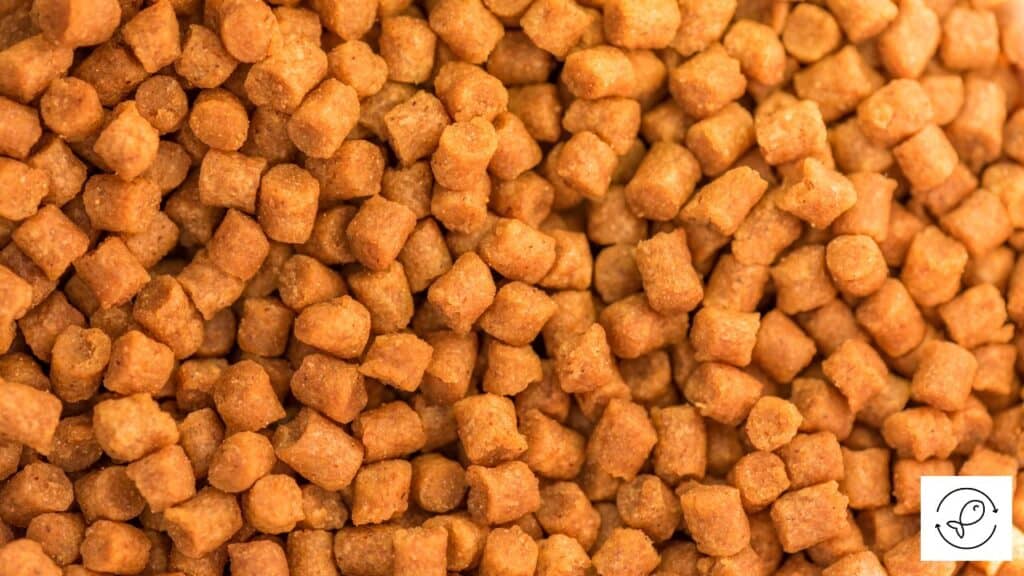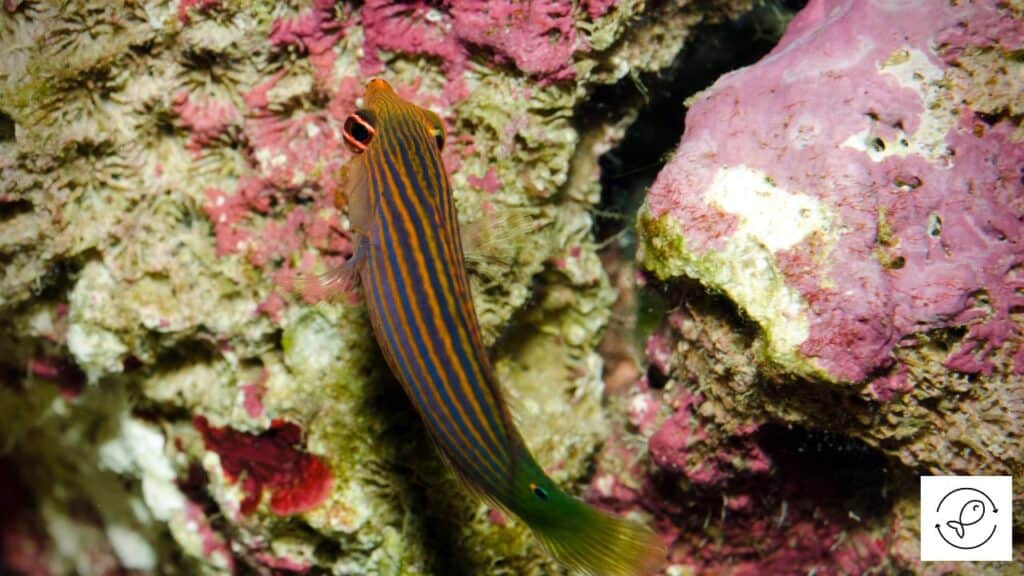Six line wrasses are carnivores that feed on tiny crustaceans found in coral reefs, including brine shrimp, mysis, amphipods, copepods, isopods, and small invertebrates. In aquariums, you can feed them flakes, pellets, and frozen and live meaty food to satisfy their dietary requirements.
Let’s now delve deeper to understand what six line wrasses eat in the wild.
What Do Six Line Wrasses Eat in The Wild?
Six line wrasses are small tropical saltwater fish that inhabit the warm waters of the Indo-Pacific oceans.
These carnivorous fish are reef-safe and known to graze on corals, eating and scavenging tiny invertebrates that live among the coral tissue.
Given below are some types of foods that six line wrasses eat in the wild.
Marine Worms
Marine worms, including flatworms, bristle worms, lugworms, and blackworms, live at the bottom of coral reefs.
They’re a vital part of the ecosystem and the primary food source for fish.
Six line wrasses graze on every nook and cranny of the coral reefs, eating and scavenging these marine worms that mainly live on the ocean floor, under shells, and rocks.
Marine worms are an important source of protein for six line wrasses.
The six line wrasses are drawn toward these worms for their flavor and wide availability in the coral reef.
Marine Crustaceans
Marine crustaceans are a vital food source in the ocean food chain.
They play a pivotal role in the ecosystem, with some being the disease carriers and others acting as food sources.
Six line wrasses commonly feed on tiny crustaceans that occupy the coral reef.
These include brine shrimp, mysis shrimp, amphipods, copepods, and isopods.
These marine crustaceans provide six line wrasses with the nutrients essential for their overall growth and well-being.
Marine Mollusks
Marine mollusks have widespread utility as a food source, and their high nutritional value helps in the healthy development of fish species like six line wrasses that consume them.
Six line wrasses are known to eat tiny snails like stomatella, pyramid snail, clams, and nudibranch (a species of sea slug) in their natural habitat.
Marine mollusks are rich in vital nutrients. They help marine fish, like the six line wrasses, to build their immune system.
What Should You Feed Your Six Line Wrasses?
Six line wrasses are carnivorous fish that eat meaty food. These marine species will happily devour small invertebrates.
So they must be fed a protein-rich diet in captivity.
Given below are some types of foods you can feed six line wrasses in your aquarium.
Manufactured Fish Food
Manufactured fish food or Processed fish food is the largest category of fish food for farmed and ornamental fish.
They offer convenience to aquarists and are designed as per the fish requirements.
Given below are some examples of manufactured fish food items for your six line wrasses.
Fish Flakes
Fish flakes contain all the essential nutrients required by your fish.
They’re a healthy meal containing meat protein that can promote good health and growth of your six line wrasses.
They also have natural ingredients, including vitamins, minerals, and trace nutrients.
Fish flakes are easy to feed, and six line wrasses will happily consume them in less than two minutes.
Fish Pellets

Pellets made from fish meal are very important for aquaculture.
They’re high in protein and contain nutrients that keep the fish healthy. They don’t sink and contaminate the tank water.
They provide everything that’s needed for the healthy development of your six line wrasses.
Pellets are made as per the dietary requirements of the fish, enabling them to grow to their maximum potential.
Frozen and Live Food
It’s the second most common food for most aquarium owners.
You can get this fresh produce from different sources, including a local store, an online retailer, or a fish farm.
There are two options, live and frozen food.
Live foods generally cost more than frozen foods and provide more nutrition than frozen ones. Fish enjoy eating live food.
Frozen Food
The diet of six line wrasses should include vitamin-enriched frozen mysis shrimp and frozen brine shrimp.
You can also feed them diced clams, krill, and other meaty items.
These food items provide high amounts of proteins and are usually fortified with vitamins to ensure the good health of your fish.
Don’t refreeze these food items; keep them at room temperature before serving.
Live Food
Six line wrasses will happily eat live food in the form of small crustaceans like a snail, urchins, and flatworms.
These fish also devour unwanted parasites from live rock, such as bristle worms.
Live food is rich in protein, has high nutritional values, and enhances fish health.
However, finding the right food can be challenging and may not always suit your budget.
Fishkeepers try to control their cost by raising live fish food such as worms, shrimp, larvae, etc.
It needs a lot of time and energy but can substantially lower the cost of fish food.
What Should You Feed Your Six Line Wrasse Fry?
Breeding and raising six line wrasses is nearly impossible in home aquariums.
Aquarists haven’t seen any success in raising wrasse fry in their marine tanks.
However, to understand the staple diet of six line wrasse fry, you will have to understand their natural habitat and the tiny microorganisms found in their reef environment.
Six line wrasse fry eat the zooplankton present in the coral reef. Zooplanktons are an integral part of the food chain.
They’re primarily microscopic, but some are visible to the eyes.
Zooplanktons are aquatic microorganisms found in water bodies.
They include aquatic mites, crustaceans, insect larvae, rotifers, etc.
All of these are consumed by the six line wrasse fry.
These microscopic organisms provide the required nutrition to the six line wrasse fry in the wild.
The reef also provides the perfect setup for the fry and microorganisms to thrive.
How Much Should You Feed Your Six Line Wrasses?
Feeding your pet six line wrasse is an important activity.
However, it’s even more critical to understand its dietary requirements and the amount of food it needs to remain healthy.
Feeding inadequate quantity and quality of food leads to poor nutrition, which can affect the growth of fish.
It can also lead to aggressive behavior because six line wrasses need adequate nutrition to thrive.
On the other hand, overfeeding can impact water quality.
If the uneaten food remains in the aquarium for too long, it can cause an increase in toxins levels, which can be hazardous to the fish.
It’s vital to get the right balance when feeding your six line wrasse.
Like most small fish, six line wrasses also prefer frequent feeding in small proportions.
So feed tiny portions of food at least two to three times a day.
As a general rule, serve them only the amount of food that they can consume within a few minutes.

